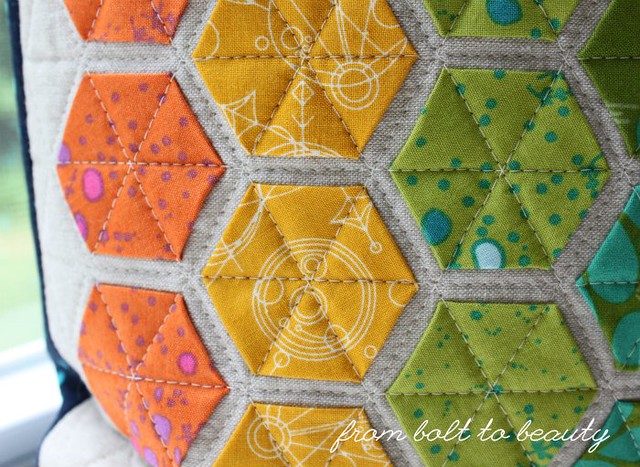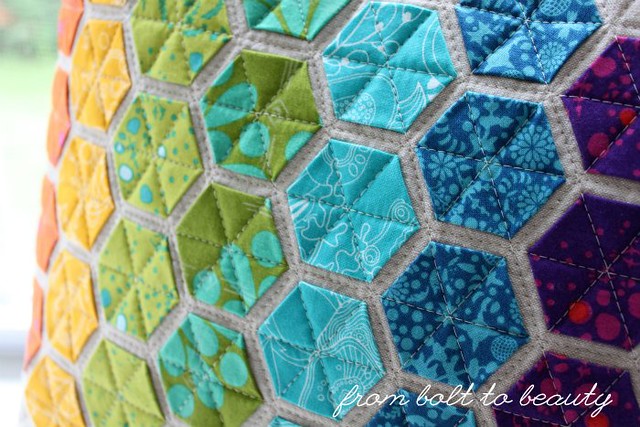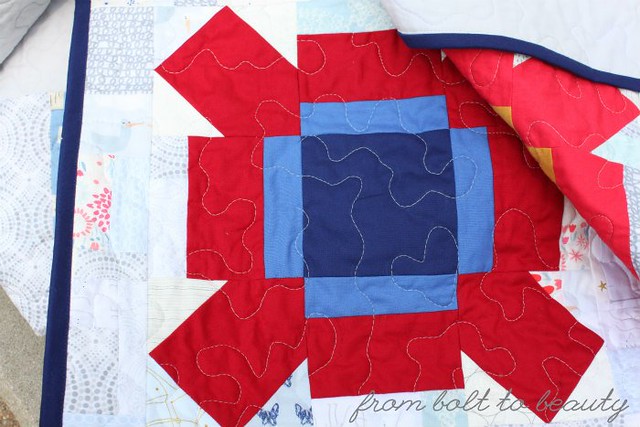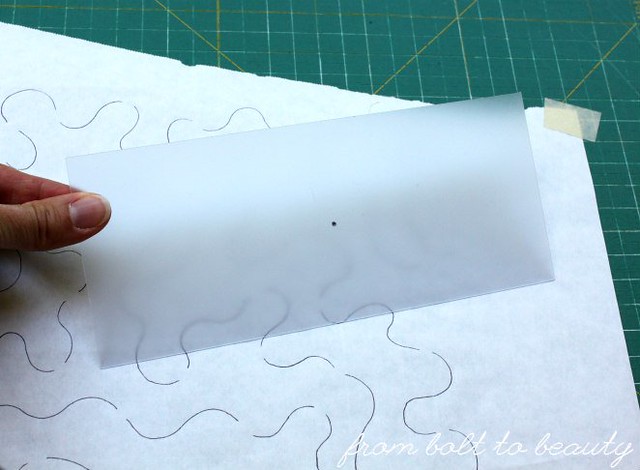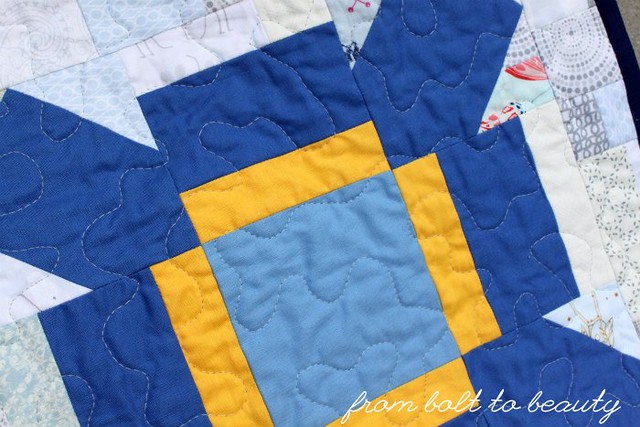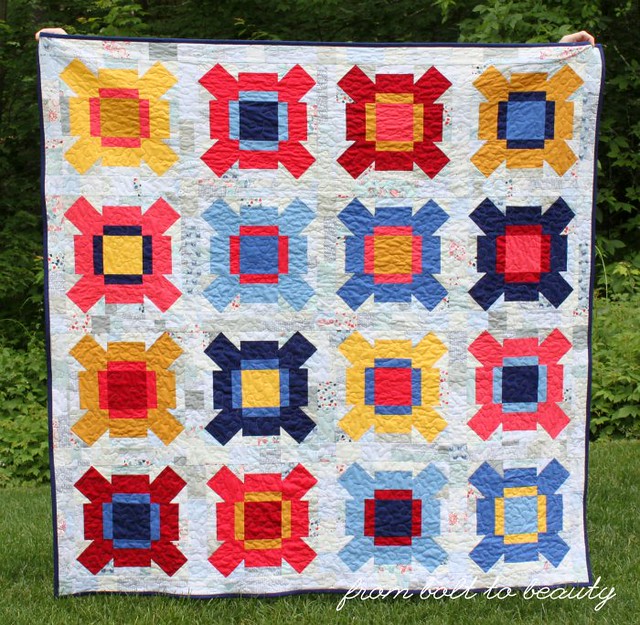My projects fall into one of two categories. There are the ones whose inception I labor over. I plot the design, the palette, the fabric pull—sometimes for months. Then there are these other projects that come out of nowhere and I bang out with little thought.
This is the story of one of those latter projects. When I learned that a friend was leaving the area to tackle new adventures, I remembered this project I had seen posted on Instagram and decided to make her a rainbow of modern hexies. A few hours later, I was happily cutting some Alison Glass charm squares into smaller chunks and basting them, English paper-piecing style, into hexagon form.
This technique was developed by Nicole Daksiewicz, of Modern Handcraft. She has made oodles of projects by hand basting and machine appliqueing hexagons to quilts, pillows, and pin cushions. (For real. Check out her hexie projects here.) I probably could have figured out how to make this pillow on my own, but I was happy to pay the $10 to support Nicole’s work.
I’m not sure why it took me so long to tackle a modern hexie project. First of all, basting the 1-inch hexagons proved to be a lot of fun. I have two little boys who are hell-bent on depriving me of any daytime quilting time this summer, and by the time they’re in bed, I’m too tired to do much of anything. But the hexies I baste on the couch, TV on, the husband and 65-pound “lap dog” next to me. Fun!
Plus, the appliqueing was easier than I would have thought. After pressing the basted hexagons and arranging them in a pleasing configuration, I followed Nicole’s instructions and glued them to the background fabric. The subsequent quilting design, which depends on careful placement of the hexies, was somewhat forgiving. Granted, I made an 18-inch pillow, not a quilt, so the threshold for success was rather low. But it’s a triumph nonetheless!
The moral of this story? If you haven’t tried Nicole’s modern hexie technique, you should. I already have a second pillow in the works as well as another Noodlehead Market Bag that I plan on adorning with hexagons.
Linking up to Needle and Thread Thursday and Finish It Up Friday ...

